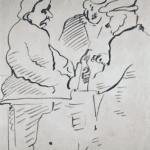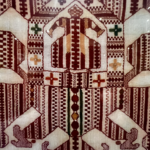1706 – 1740. Architect: Domenico Trezzini
The day of the fortress’s founding—May 16, 1703—is considered to be St. Petersburg’s birthday. It was here on the small Hare Island in the delta of the Neva River that Peter the Great cut two sods of turf in the shape of a cross and proclaimed, “Here the city shall be!” Built to protect the newly conquered lands from the Swedish armies, the fortress never saw military action. Nevertheless, its role in Russian history is significant.
The colossal walls of the fortress, across the river from the Winter Palace, became the major political prison of the Empire while the Peter and Paul Cathedral (1733, architect Domenico Trezzini) was turned into the burial place of the tsars. Beginning with Peter the Great, all the Russian tsars were buried in the Peter and Paul Cathedral, with the exception of Peter II who died in Moscow and was buried there. The remains of the last Emperor Nicholas II and his family were transferred to the cathedral’s vault on the 80th anniversary of their deaths, July 17, 1998.
At a height of 404 feet, the Peter and Paul Cathedral is the world’s tallest Orthodox bell tower.





You must be logged in to post a comment.